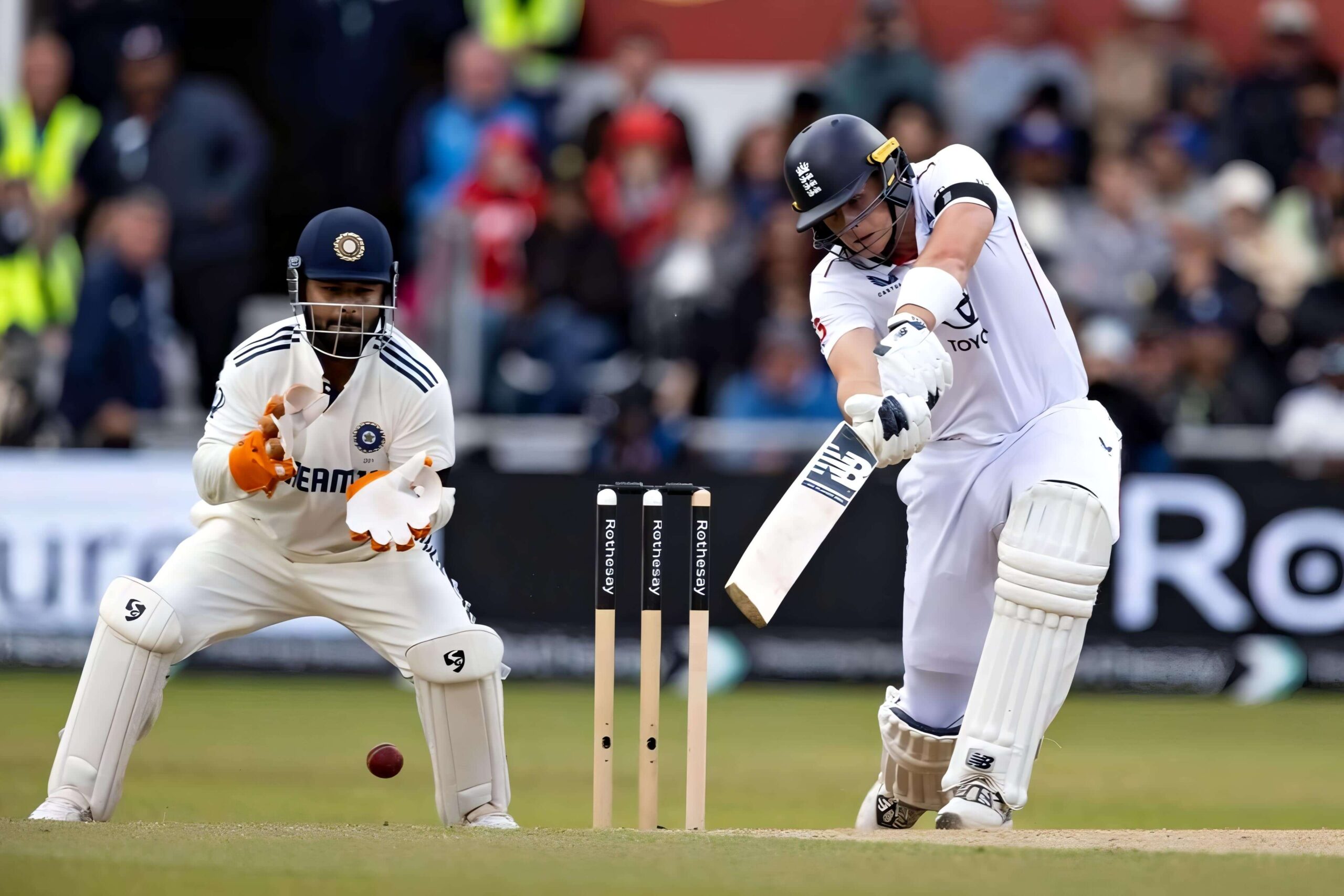Eng vs Ind 2025 Headingley Test Ends in Historic Chase
1. A Battle Lost in Silence, Not Roars
In the 78th over of England’s fourth-innings chase, with just 29 runs required for victory, the image of Shubman Gill and Jasprit Bumrah in deep conversation while Joe Root and Shardul Thakur stood idle was symbolic. India, after nearly five grueling days of intense cricket, looked spent — physically and mentally. Bumrah, the tireless warrior, had already bowled more than 45 overs in the match, and as it turned out, he wouldn’t even take the new ball. That moment epitomized the quiet acceptance of defeat.
2. From High Stakes to a Limp Finish
When Mohammed Siraj and Ravindra Jadeja took the new ball instead of Bumrah, the game swiftly slipped away. Siraj leaked six runs, and Jadeja’s over went for 18 — the final punch coming via a Jamie Smith six over wide long-on. England romped home with five wickets to spare, completing their second-highest successful run chase in Test history with little fuss, leaving India with more questions than answers.
KL Rahul Leeds 137 Test Average Still Hurts But Not Playing for Numbers
3. Duckett and Crawley’s Masterclass Under Pressure
England’s platform was laid by the fearless duo of Ben Duckett (149) and Zak Crawley (64), who combined for a 188-run opening stand under testing overcast conditions. With India relying heavily on the early movement of Bumrah and the fourth-innings threat of Jadeja, the openers handled the pressure with remarkable poise and intent. Their approach was methodical, and their stroke play aggressive but calculated — a masterclass in chasing on the final day of a Test.
4. Bazball’s Braintrust: Root and Stokes Seal the Deal
Once the foundation was set, Joe Root (53)* and Ben Stokes (33) ensured the chase was completed without any late drama. The presence of two seasoned campaigners, both deeply entrenched in the philosophy of ‘Bazball’, removed any scope of panic. Their calm presence underlined England’s growing maturity and experience in pulling off high-octane run chases.
5. The Final Session: No Thrills, Just England’s Will
Going into the final session, the match had all the ingredients of a classic finish. Seven centuries had been scored across both innings, five bowlers had conceded over 100 runs, and nearly ten catches had gone down. Yet, the final session lacked tension. England knocked off the remaining 102 runs in just 37 overs, comfortably steering their ship through calm waters that should have been stormy.

6. Bumrah’s Burden and India’s Bowling Blues
England’s success largely revolved around how they handled Bumrah. He was expected to be the wrecking ball — and he did his part — but lacked meaningful support. Siraj’s early spark fizzled out due to inconsistency. Shardul Thakur and Prasidh Krishna picked up two wickets each but never looked threatening. India deeply missed the swing and guile of Mohammed Shami, whose absence was glaring in conditions tailor-made for him.
7. Tactical Misfires and Poor Execution
India’s bowling strategy was riddled with inconsistencies. Thakur, supposed to pitch it up to invite edges, kept bowling short. Against lower-order batter Jamie Smith, the short-ball ploy was bizarrely shelved. Jadeja, traditionally effective on wearing fifth-day surfaces, looked clueless as England’s batters frequently and successfully deployed the reverse sweep. Despite clear pre-match plans, execution was poor, and field placements reactive.
8. Reverse Sweep: Jadeja’s Undoing
England’s gameplan against Jadeja was bold and innovative. Duckett initiated the reverse sweep assault, with Root and Stokes joining in later. This deliberate ploy scrambled Jadeja’s rhythm and prevented him from building pressure. It was a perfect counter to India’s supposed trump card, effectively removing the sting from their most dangerous spinner.
9. Leadership Lessons for Shubman Gill
In only his early days as Test captain, Shubman Gill tried to stay involved. He switched bowlers, shifted fielders, consulted seniors. But when execution falters, no amount of planning can bail a side out. While his intent and energy were evident, Gill must now confront deeper questions — team balance, tactical discipline, and how to utilize key players better in high-pressure scenarios.
10. Beyond the Loss: A Moment of Reflection
After the game, body language told the story. Jadeja searching for sunlight through clouds. Pant walking with a speaker and a baby stroller, silent instead of blasting Punjabi beats in celebration. England’s Barmy Army trumpets drowned out any Indian cheer. The contrast couldn’t be sharper. For India, the road to redemption begins with introspection — on dropped catches, misfired spells, and a match that slipped through not in one session, but across several missed moments.
—
Conclusion
England’s five-wicket win at Headingley wasn’t just a testament to their aggressive brand of cricket but also to their planning, adaptability, and calm execution under pressure. For India, it was a painful reminder that even 835 runs across two innings aren’t enough if the bowling lacks venom and tactics go awry. The Anderson-Tendulkar Trophy is off to a thrilling start, but India must regroup fast with Birmingham, Lord’s, Manchester, and The Oval yet to come.









